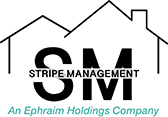As an adult residing in Maryland, it’s crucial to be well-informed about the implications of lead presence in your rental property. Disturbingly, lead – a harmful substance particularly affecting children – can often be found in older structures and rentals, presenting significant health hazards. This essay embarks on an informative journey, exploring why lead testing is crucial, the regulations that oversee it in Maryland, the testing process, and the subsequent steps necessary following a positive lead test result. Building knowledge in this area is indispensable, potentially safeguarding you and your family’s health, and ensuring your landlord’s adherence to the state’s laws and regulations.
Why Lead Testing Is Important
Why Lead Testing Is Important
Occupational, environmental, and residential lead exposure is a widespread public health concern. Lead is a highly toxic heavy metal that can cause serious health problems, especially in fetuses and young children. These issues include development delays, learning difficulties, irritability, loss of appetite, weight loss, sluggishness and fatigue, abdominal pain, vomiting, constipation, hearing loss, and seizures. In pregnant women, lead exposure can cause premature birth and decreased growth of the fetus. In adults, it can cause increased blood pressure and hypertension, decreased kidney function, and reproductive problems.
Lead testing plays a pivotal role in identifying sources of lead exposure. For rental properties in Maryland, it holds substantial importance due to the state’s sizable number of older homes and buildings, many of which were built and painted during an era when lead-based paint was common.
Lead Contamination Risk in Older Buildings
Homes built before 1978, when the federal ban on residential use of lead-based paint took effect, are at a high risk of containing lead. In Maryland, a large number of rental properties were built before this period, posing a potential lead exposure risk for occupants.
Lead-based paint can degrade over time, producing dust and flakes that people can inhale or ingest. This puts occupants, especially children who are more likely to touch surfaces and put their fingers in their mouth, at risk of lead poisoning.
Moreover, older pipe fittings and solder used in plumbing might contain lead, which can leach into the drinking water. The soil around older homes may also be contaminated with lead, another potential exposure pathway.
Maryland’s Approach to Lead Testing in Rental Properties
In Maryland, landlords of rental properties built before 1978 have legal obligations to comply with state-established lead risk reduction standards. This requires the registration of such properties and certification of meeting these standards.
Since 1996, it has been mandatory for them to adhere to Full Risk Reduction Measures, which stipulates a successful dust test for lead. Furthermore, since 2015, the law encapsulated not just multifamily units but single-family rental properties as well.
In cases where a minor tenant is found to have raised blood lead levels, the Department of the Environment intervenes by performing investigations. Therefore, to safeguard tenant health and safety, lead testing is not merely a suggestion but a legal necessity for landlords.
Support in the form of lead hazard reduction assistance and enforcement of obligatory inspections is provided by the state. Inspections consist of visual assessments for deteriorated paint and a dust wipe test for lead, administered by approved lead inspectors. When properties pass these evaluations, landlords receive a Full Risk Reduction Certificate.
So in summary, landlords should take the initiative in lead testing in rental properties as a crucial step for both tenant health and legal adherence.

Lead Laws and Regulations in Maryland
Interpreting Maryland’s Lead Laws
In Maryland, highly stringent rules are imposed concerning lead testing and remediation in residential rental properties. The objective of these laws lies in the protection of tenants, particularly children, from lead poisoning, a condition that potentially results in grave health issues. The role of administering lead poisoning prevention and ensuring homes undergo lead hazard inspections falls under the purview of the state’s Department of the Environment (MDE).
Role of Landlords in Lead Testing
Landlords in Maryland bear the responsibility for lead testing in rental properties. These properties must be registered annually and get a lead poisoning prevention certificate for each rental unit. This certificate displays that the unit has undergone mandatory lead risk reduction steps such as full risk reduction or modified risk reduction. These steps are taken when a child under six resides or is going to reside in the unit.
To ensure the property is lead-free, the landlord must also arrange for a Lead Dust Test conducted by an MDE-accredited inspector. The test checks for lead residue in dust on floors and windowsills, as dust is a common lead source.
Required Disclosures for Landlords
Landlords have specific responsibilities under Maryland’s lead regulations to provide tenants with information about lead hazards. They must provide all new tenants with the EPA’s “Protect Your Family from Lead in Your Home” brochure and the MDE’s “Notice of Tenant Rights” document. It’s also required to inform tenants if the property meets the criteria for an Exempt property.
Landlords are additionally required to provide tenants with copies of all lead inspection certificates and the results of any testing done on the property. Failure to provide these documents or attempts to forge them can result in hefty fines or legal repercussions for landlords.
Testing Schedules and Compliance
Under the Maryland laws, landlords are required to undergo lead testing frequently. For properties built before 1978, a test must be performed every time the property changes tenants. This rigorous testing schedule is vital to ensuring all rental properties are safe and not exposing residents to lead risks.
Landlords in Maryland must also comply with a number of other requirements about lead paint, including using lead-safe work practices when renovating, repairing, or painting properties.
Consequences of Non-Compliance
Failure to comply with Maryland’s lead regulations comes with heavy penalties. Landlords may face fines up to $25,000 per violation per day. They may also be held liable for any harm caused to tenants from lead exposure, and it may result in a tenant being legally able to withhold rent, terminate the lease, or sue the landlord for harm caused by lead exposure.
The MDE diligently enforces these regulations to ensure that everyone in Maryland has a safe and healthy living environment. These measures serve as a solid protective framework for Maryland’s residents, helping to reduce lead exposure and its associated health risks.
Comprehending Maryland’s Lead Regulation Essentials
It’s fundamental to comprehend the rigorousness of Maryland’s lead regulations; designed effectively for the welfare of the state’s inhabitants. Especially if you happen to be a landlord or a tenant, a comprehensive understanding of these rules is vital in safeguarding yourself and your loved ones from the adverse effects of lead exposure. With mandatory testing and requisite landlord disclosures, Maryland enforces stringent measures to ensure the safety standards of rental properties, giving utmost importance to tenant’s wellbeing.

Photo by bondomovies on Unsplash
The Process of Lead Testing
Exploring Lead-Related Consideration in Rental Homes
In Maryland, all rental accommodations built prior to 1978 are mandated by the Maryland Department of the Environment (MDE) to undergo lead testing. This regulation has been put in place considering the increased likelihood of lead-based paint occurrences in older establishments. Such a measure helps in the prevention of health risks associated with lead exposure, with young children being the most vulnerable group.
Areas of Property Tested for Lead
Lead testing typically focuses on areas where there is deteriorated paint, or where friction or impact can generate lead dust, such as windows, doors, and floors. The testing may also include the soil around the property, as lead from exterior paint or historic gasoline emissions can contaminate soil.
The Lead Testing Process
The process of lead testing involves the use of either X-Ray Fluorescence (XRF) or paint chip sampling. XRF is a non-destructive technique that uses a device to determine the amount of lead in painted surfaces. It’s most often used because it doesn’t damage the property. Paint chip testing is another method where small pieces of paint are collected from different areas and then sent to a lab for lead analysis.
Interpreting Test Results
The results from the lead test would indicate whether lead hazards are present in the rental property. This information would be displayed in micrograms per square foot (µg/ft²). A property is considered lead-safe if levels are below designated levels which are 0.5µg/ft² for floors, 250µg/ft² for interior window sills, and 400µg/ft² for window troughs.
Who Conducts Lead Testing?
Only accredited lead inspectors or risk assessors licensed by the MDE are permitted to conduct these lead tests. These professionals have passed a training course and certification exam, and typically have experience in dealing with environmental hazards.
Maintaining Compliance
After a successful lead inspection, the inspector or risk assessor will provide a Full Risk Reduction Certificate which remains valid as long as the property owner meets certain conditions, like regular re-inspections by a certified lead paint contract inspection firm.
Maryland law also requires landlords to distribute specific EPA publications to tenants, both at lease signing and annually thereafter. The publications are “Protect Your Family From Lead in Your Home” and “The Lead-Safe Certified Guide to Renovate Right.” Distributing these materials helps educate tenants about lead hazards and how to protect their families.
In Maryland, the requirement for rental property owners is to remediate and retest the property swiftly when it fails the lead test. The state has the power to impose substantial fines and, in severe cases, even revoke rental licenses if these hazardous conditions are not rectified promptly.
Photo by thetonik_co on Unsplash
Steps After Positive Lead Test
Deciphering Positive Lead Test Implications
It’s crucial to act without delay when a Maryland rental property displays a positive lead test. This harmful metal, if present, can pose serious health threats, especially to vulnerable groups such as young children and pregnant women.
Taking Immediate Steps
Once the rental property is confirmed to contain lead, the landlord or property owner is legally obligated to alert all tenants. It’s important to understand the dangers associated with lead exposure and take steps to minimize the risk. Lead poisoning can lead to developmental issues in children, reproductive problems in adults, and numerous other health issues.
Lead Abatement and Removal
Following a positive lead test, it’s crucial to take corrective actions to resolve the issue. This generally involves lead abatement – measures taken to treat or eliminate lead-based paint hazards. Alternatively, lead removal is another accepted process, involving completely taking away the lead-based components from the property. Maryland laws require that these processes be supervised by licensed contractors specializing in lead abatement or removal.
Understanding Relocation Requirements
In some cases, the risk to the health of the occupants might necessitate temporary relocation during the lead abatement or removal process. In such scenarios, the landlord must offer the tenants another lead-free property to reside in. Maryland laws make it clear that the costs associated with the temporary relocation are the landlord’s responsibility.
Legal Compliance
As a landlord or property owner, it’s crucial to understand that failure to take immediate and appropriate action after a positive lead test could result in hefty fines and potential lawsuits from affected tenants. As part of the legal compliance, landlords in Maryland must also provide tenants with the ‘Notice of Tenant’s Rights’ and ‘Preventing Lead Poisoning’ brochures. Plus, landlords are required to perform a Full Risk Reduction Certificate inspection every time the property is rented to a new tenant.
Post-Abatement Retesting
Once the process of lead abatement or removal is completed, retesting is essential to confirm that the property is now safe for occupation. It’s generally recommended to hire a licensed lead inspection contractor to conduct this test. They will use a specialized X-ray fluorescence (XRF) machine to measure the lead content, ensuring it’s at a permissible level.
Educating Tenants
In addition to fulfilling legal requirements, landlords should also communicate the results and actions taken to the tenants, taking a step forward in educating them about the hazards of lead and the efforts undertaken to resolve the issue. Especially in a rental environment, it’s essential to foster open communication between landlords and tenants regarding any potential hazards that can lead to health complications.
In conclusion
Dealing with a positive lead test in a rental property involves multiple steps, adhering to legal obligations, ensuring safety precautions, minimizing health risks, and establishing a safe living environment for the tenants.

With this newfound knowledge, you are now equipped to navigate the terrain of lead testing for rental properties in Maryland. Acknowledging the importance of lead testing, understanding the state’s related laws and regulations, ascertaining the testing process, and learning about the procedures following a positive lead result, gives you the power to ensure a safer living environment. Remember, lead testing is more than just a subtle legal requirement; it’s an essential step toward a lead-free habitat, prioritizing the health and well-being of its inhabitants. Make sure to adequately utilize this information, insist on necessary testing, and encourage others to do the same.
